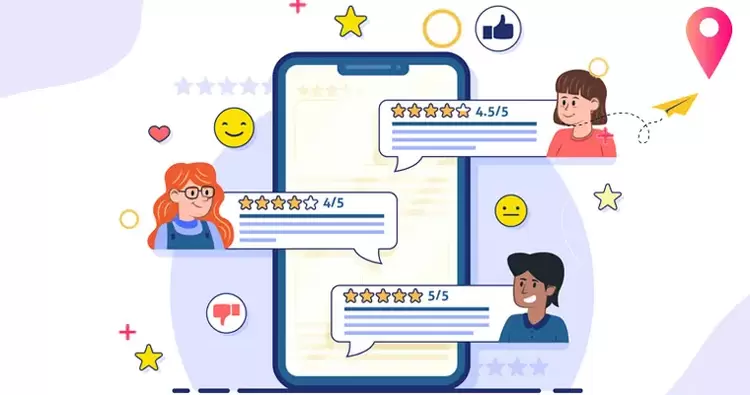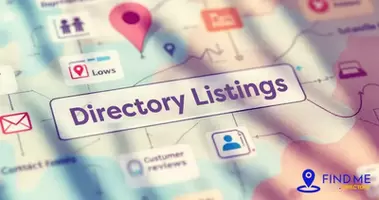
Importance of Responding to Reviews
In today’s digitally driven market, customer reviews play a pivotal role in shaping a business's reputation. Whether it's a glowing five-star review or a scathing one-star critique, how a company responds can significantly influence potential customers and overall brand perception.
Impact of Customer Reviews on Business Reputation
Customer reviews are more than just feedback; they are a barometer of a company's standing in its industry. A recent study revealed that a staggering 84% of consumers trust online reviews as much as personal recommendations. This data underscores the essential nature of responding to reviews.

How do reviews impact reputation?
- Reviews can have a significant impact on a company's reputation. Positive reviews can help build trust and credibility among customers, leading to increased sales and customer loyalty. On the other hand, fake reviews can damage a company's reputation, potentially turning away potential customers and hurting their bottom line. It is important for businesses to actively manage and respond to reviews in order to maintain a positive reputation in the eyes of consumers.
- First Impressions Matter: A potential customer often encounters reviews before initiating any business relationship. A company with numerous positive reviews is more likely to gain trust immediately.
- Managing Expectations: Good reviews can set realistic expectations for new customers, helping them feel assured about their purchase decisions.
- Crisis Control: Negative reviews can tarnish a reputation swiftly. Responding promptly and professionally can mitigate potential damage and show prospective customers that the business cares about its clientele.
For example, a small café that received a bad review about its service responded openly and offered a free drink to the dissatisfied customer. Not only did this turn the customer's experience around, but it also showcased to future visitors that the business is committed to customer satisfaction.

Benefits of Engaging with Customer Feedback
Engaging with reviews transcends mere damage control—it offers specific benefits that can enhance a brand's relationship with its customers.
- Builds Trust and Loyalty: When customers see a business engaging and acknowledging feedback, they feel valued and appreciated, leading to stronger loyalty.
- Encourages More Reviews: Customers are more likely to leave reviews when they know their opinions matter and that the business will respond.
- Opportunities for Improvement: Constructive criticism provides actionable insights that can help businesses adjust offerings and enhance customer experiences.
In conclusion, recognizing the impact of customer reviews on business reputation and actively engaging with feedback provides businesses with a unique opportunity to foster trust, loyalty, and continuous improvement. Ignoring reviews could mean missing out on a treasure trove of insights and customer connections.

How to Effectively Respond to Positive Reviews
Now that we understand the importance of responding to reviews, let's delve into how to effectively tackle those shining stars—positive reviews. By responding thoughtfully, businesses can reinforce customer loyalty and enhance their reputation for prospective buyers.
Acknowledge and Thank the Customer
Every positive review is an opportunity to celebrate! When a customer takes the time to leave a good review, it’s crucial to acknowledge their effort and express genuine gratitude.
Why is gratitude important?
Gratitude is important because it allows us to recognize and appreciate the positive things in our lives. It helps to shift our focus from what we lack to what we have, leading to increased happiness and contentment. Gratitude also fosters positive emotions, improves relationships, and enhances our overall well-being. By practicing gratitude, we can cultivate a more positive outlook on life and feel more connected to others.
- Establishes Appreciation: A simple "thank you" can go a long way in making customers feel valued. It shows that their feedback is not merely a statistic but something the business genuinely cares about.
- Boosts Brand Image: A company that takes the time to acknowledge its customers showcases a commitment to service, enhancing its overall image.
For instance, a local bookstore received a glowing review from a satisfied customer who praised the staff’s knowledge and friendliness. The owner responded with a heartfelt message saying, "Thank you for your kind words! We're thrilled you enjoyed your visit and look forward to helping you find your next great read!" This not only acknowledges the customer but also encourages potential patrons to visit.
Personalize the Response
While acknowledging and thanking customers is a great start, personalizing responses elevates the interaction. It shows that businesses are attentive and engaged rather than simply relying on canned responses.

How can businesses personalize their feedback?
Businesses can personalize their feedback by customizing it to the specific individual or group they are addressing. This can be done by using the person's name, referencing specific interactions or experiences they have had with the business, and tailoring the feedback to address their unique strengths and areas for improvement. Businesses can also use data and analytics to track customer preferences, behavior, and satisfaction levels in order to provide more targeted and relevant feedback. By personalizing their feedback, businesses can show customers that they value their individuality and are committed to helping them succeed.
- Reference Specific Details: Mentioning specifics from the review can help create a personal connection. For example, if a customer mentions a particular product they loved, highlight that product in the response.
- Use the Customer's Name: Addressing the reviewer by their name makes the interaction more personable and genuine.
For example, if a restaurant receives praise for a delightful dish, a personalized response might say, "Thank you, Sarah! We’re delighted to hear that you enjoyed our signature lasagna. We can’t wait to welcome you back for another delicious meal!"
In conclusion, when businesses take the time to acknowledge, thank, and personalize their responses to positive reviews, they build stronger customer relationships. This not only bolsters loyalty but also enhances the overall customer experience, ultimately driving growth.
Strategies for Addressing Negative Reviews
While positive reviews can bolster a business’s reputation, negative reviews, if left unattended, can have the opposite effect. However, addressing these critiques effectively can turn a challenging situation into a potential opportunity for improvement and customer retention. Here are two essential strategies to tackle negative reviews with grace.

Respond Promptly and Professionally
The first step in addressing negative reviews is to respond swiftly. Customers appreciate timely responses; it shows that the business values their feedback and is open to dialogue.
Promptness is crucial for several reasons. Firstly, being punctual shows respect for others' time and schedules. It demonstrates reliability and professionalism, which can positively impact your reputation and relationships with others. Additionally, being on time allows you to complete tasks efficiently and effectively, leading to increased productivity and success. In today's fast-paced world, promptness is essential for achieving your goals and maintaining a competitive edge in your professional and personal life.
- Demonstrates Accountability: A prompt response signals to customers that the business takes their concerns seriously and is committed to resolving issues.
- Prevents Escalation: Quick responses can help deter further negative comments or reviews. When customers see their concerns being addressed, they are less likely to escalate their dissatisfaction.
For instance, a fitness studio received a less-than-stellar review from a member frustrated with the cleanliness of the facilities. The manager quickly acknowledged the issue by writing, "Thank you for your feedback, Joe! We sincerely apologize for the inconvenience you experienced. We strive to maintain a clean environment and will address this with our cleaning team immediately." This not only shows accountability but also reassures other customers that improvements are being made.
Offer Solutions and Take the Conversation Offline if Needed

When addressing negative reviews, it's essential to offer a solution or a path to resolution. This demonstrates a commitment to customer satisfaction and encourages trust.
Effective strategies include:
- Acknowledge the Issue: Begin by sincerely acknowledging the customer's feelings and the issue they raised. This shows empathy and that you value their feedback. For example, "We’re sorry to hear that your experience did not meet your expectations. We appreciate you bringing this to our attention."
- Propose a Solution: If a specific issue is raised, suggest an actionable solution. For example, if a customer complains about a meal being served cold, an ideal response would be, "We'd love to invite you back for a complimentary meal, made to your satisfaction."
- Take the Conversation Offline: If the issue is complex or sensitive, it may be best to move the discussion to a private channel, like email or direct messaging. This allows for a more personalized exchange and can help reduce public tension.
- Follow Up Publicly: After resolving the issue privately, consider leaving a follow-up public comment thanking the customer for their feedback and sharing how the situation was rectified. This demonstrates transparency and shows prospective customers that you take complaints seriously. For example, "Thank you for reaching out to us. We're glad we could resolve the issue, and we hope to welcome you back soon!"
- Request Feedback on Improvement: Invite the reviewer to share additional feedback on how you can improve their experience in the future. This not only shows that you care about their opinion but also gives you valuable insights. For instance, "We would love to hear any additional suggestions you may have to improve our service."
Here's another example, if a hotel guest leaves a negative review about their stay, a response could be, "We’d love to discuss your experience further. Please reach out to us directly at [email] so we can make things right."
In summary, addressing negative reviews through prompt, professional responses and offering concrete solutions can turn potential crises into meaningful opportunities for engagement and improvement. When done right, these moments can actually enhance a brand's credibility and foster deeper customer relationships. By incorporating these strategies, you can further enhance your brand's reputation and build stronger relationships with customers, even in challenging situations.
Encouraging Feedback and Reviews
As businesses work diligently to manage review responses, the importance of proactively encouraging feedback cannot be overstated. Actively seeking out customer opinions not only provides invaluable insights but also enhances customer engagement. Here are two effective strategies for fostering a culture of feedback and reviews.
Creating Channels for Customer Feedback

Establishing various channels for customers to express their thoughts is key to gathering feedback. Whether it’s through surveys, social media, or direct communication, providing multiple avenues can increase participation.
What are some effective channels?
- Surveys: Create short and engaging surveys that can be sent via email after a purchase. These can include rating scales and open-ended questions for more detailed feedback.
- Social Media: Actively monitor your social media platforms. Encourage followers to share their experiences and send direct messages for any concerns.
- Website Feedback Forms: Incorporate feedback forms on your website that allow visitors to share their thoughts easily.
For example, a local coffee shop implemented a simple QR code on their receipts that linked to an online survey. The response they received was overwhelming, and it allowed them to identify popular beverages and improve the less favored items.
Incentivizing Customers to Leave Reviews

Incentives can be a significant motivator for customers to take the time to leave reviews. Offering a little something in return can encourage more customers to share their experiences. Be sure to review FTC's guidelines on incentives.
What types of incentives can be offered?
- Discounts or Coupons: Offer customers a discount on their next purchase for leaving a review. This not only encourages feedback but also drives repeat business.
- Loyalty Points: For businesses with loyalty programs, consider giving points for each review submitted, adding an extra layer of incentive.
- Contests and Giveaways: Organize a monthly giveaway where every customer who leaves a review is entered for a chance to win a gift card or product.
For instance, an online retailer launched a “Review & Win” campaign, where customers who left reviews entered a monthly draw for a significant gift card. The initiative significantly boosted their review count and enhanced customer loyalty.In conclusion, creating effective channels for customer feedback and incentivizing reviews can transform the way businesses engage with their customers. By making the feedback process seamless and rewarding, companies can foster stronger relationships and continuously improve their offerings.
Monitoring and Analyzing Reviews
Once a business actively encourages reviews and feedback, the next crucial step is to monitor and analyze this information effectively. By understanding the sentiment behind customer reviews, businesses can make informed decisions to improve their services and foster stronger relationships with their clientele. Here are two strategies to optimize the management of reviews.
Using Tools to Track Reviews
In the age of digital communication, numerous tools can assist businesses in monitoring online reviews across various platforms. Implementing these tools simplifies the process and ensures that no feedback goes unnoticed.
What are some effective tools?
- Review Aggregators: Platforms like Trustpilot or G2 aggregate reviews from multiple sources, allowing businesses to see their ratings in one place.
- Social Listening Tools: Use tools like Hootsuite or Sprout Social to track mentions of your brand across social media. These tools can alert businesses to new reviews and conversations that may need a response.
- Customer Relationship Management (CRM) Systems: Many CRMs have built-in features to manage customer feedback, helping businesses keep track of interactions and sentiments over time.
For example, a boutique hotel used a review aggregator to monitor feedback on multiple travel sites like Find Me Directory and Google Reviews. This helped them identify trends and respond to guests in a timely manner, improving their overall rating significantly.
Extracting Insights from Customer Feedback

Monitoring reviews is just the beginning; extracting actionable insights from this data is where the real value lies. By analyzing customer feedback, businesses can identify strengths, weaknesses, and areas for improvement.
How can businesses extract insights effectively?
- Identify Common Themes: Look for recurring comments—both positive and negative. Are customers consistently praising a specific product or criticizing a particular aspect of service?
- Use Sentiment Analysis: Tools that provide sentiment analysis can examine the emotional tone of reviews. This analysis helps businesses understand customer emotions and experiences better.
- Incorporate Feedback into Strategic Planning: Utilize gathered insights to inform changes in business strategies, such as improving staff training or altering product offerings.
For instance, a fitness center regularly reviewed their surveys and found that members were largely satisfied with the classes but unhappy with the equipment maintenance. By addressing this issue, they not only increased member satisfaction but also retained customers longer.In conclusion, the process of monitoring and analyzing customer reviews is essential for any business wanting to thrive in a competitive market. By leveraging the right tools and extracting meaningful insights, businesses can enhance their offerings, improve customer experiences, and ultimately strengthen their brand reputation.
Leveraging Reviews for Business Growth
Having established effective monitoring and analysis methods for customer reviews, businesses can now focus on leveraging this feedback for growth. By showcasing positive reviews and learning from constructive criticism, companies create a foundation for continuous improvement and customer loyalty.
Showcasing Positive Reviews on Website and Social Media

Positive reviews are invaluable marketing tools that can significantly enhance a company’s credibility and appeal. Displaying these testimonials prominently can attract new customers and reaffirm the loyalty of existing ones.
How can businesses effectively showcase positive reviews?
- Testimonials Section on Website: Create a dedicated testimonials page or highlight positive reviews on the homepage. This can serve as social proof for potential customers exploring your offerings.
- Social Media Posts: Share customer reviews on platforms like Instagram, Facebook, or Twitter. Include visuals—such as customer photos or graphics that highlight the review—to make the posts more engaging.
- Email Marketing Features: Incorporate positive reviews in regular newsletters or promotional emails. This can enhance customer trust and encourage further purchases.
For example, a local restaurant featured customer testimonials on their website, complete with pictures of satisfied diners. This approach not only enhanced their credibility but also drew in new patrons eager for a reliable dining experience.
Implementing Changes Based on Constructive Criticism
Constructive criticism is a goldmine of information that can drive business growth. Rather than viewing negative feedback as a setback, businesses should embrace it as an opportunity to enhance their offerings.
How can businesses implement changes based on feedback?
- Prioritize Common Issues: Analyze the reviews to identify recurring complaints or suggestions. This targeted approach allows businesses to focus on the areas that matter most to their customers.
- Communicate Changes: Once improvements are made, inform customers about the changes through social media and email. This not only shows that their feedback is valued, but it encourages further engagement.
- Monitor Results: After implementing changes, watch for the impact on reviews and customer satisfaction. This allows businesses to see what works and adjust strategies accordingly.
For instance, a beauty salon that received feedback about long waiting times implemented an online booking system. They not only reduced wait times but also saw an increase in customer satisfaction ratings as a result.In conclusion, leveraging positive reviews alongside constructive criticism can create a powerful synergy for business growth. By showcasing positive sentiments and proactively addressing areas for improvement, businesses can enhance their reputation, deepen customer relationships, and set the stage for sustained success in the market.








Join the discussion
0 Comment(s)